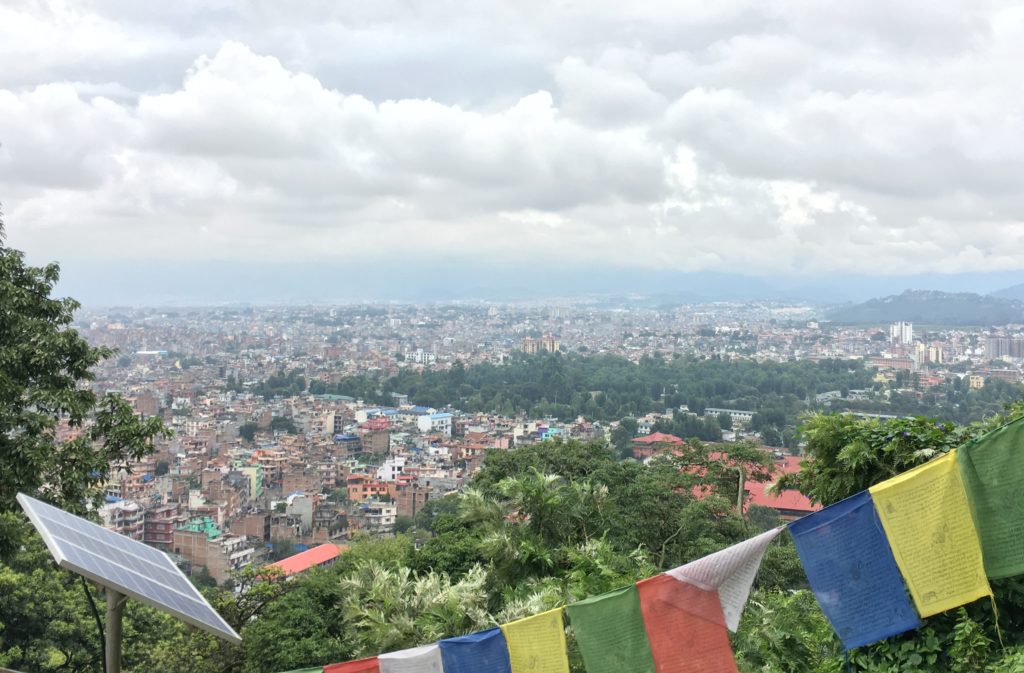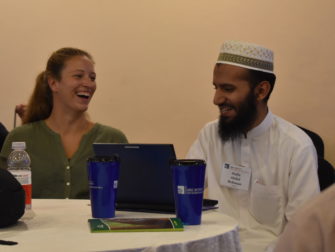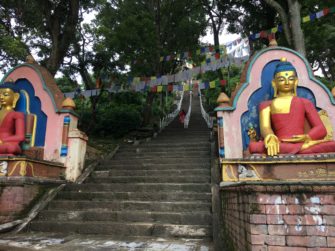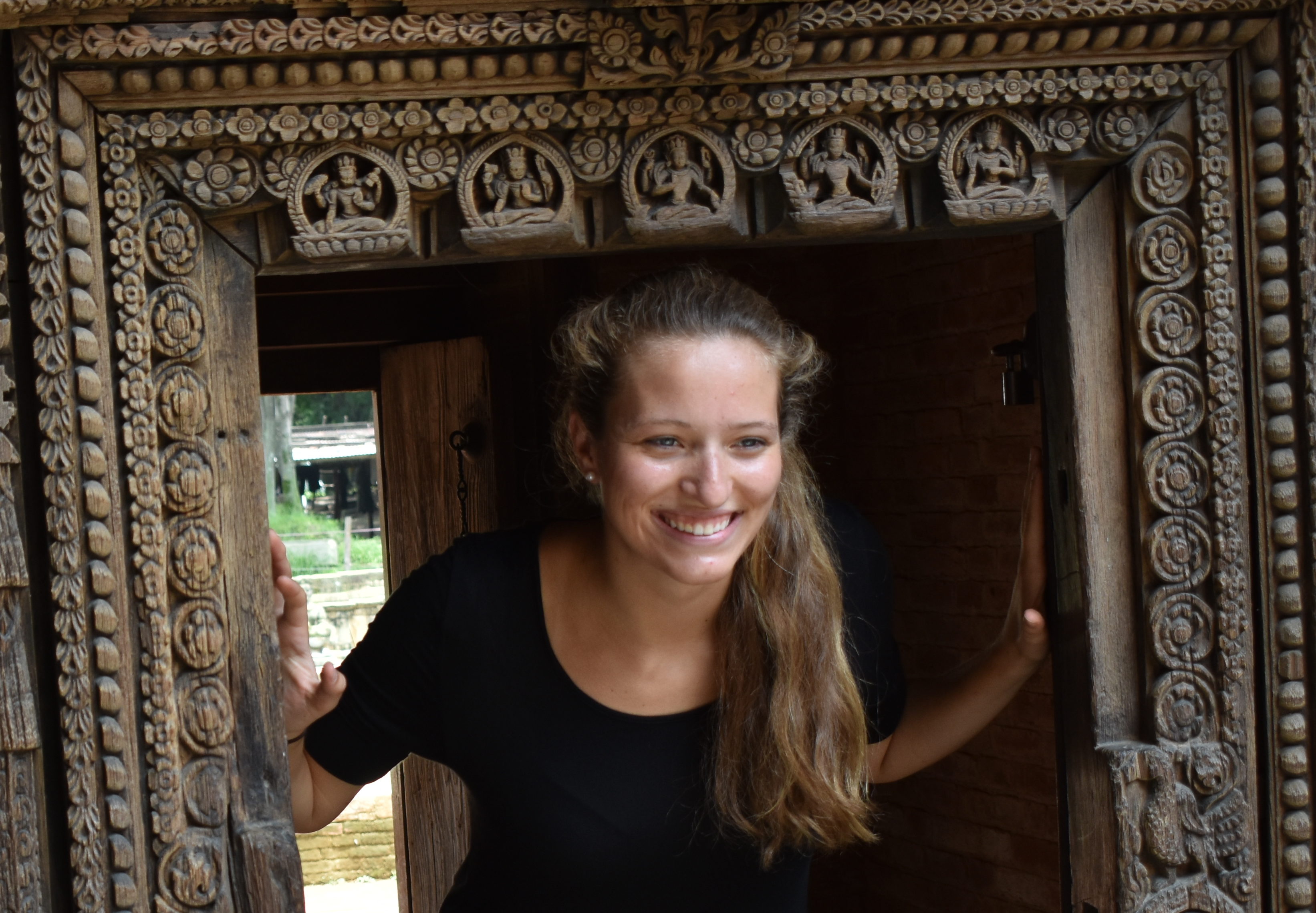
Americans often assume that everyone understands the world the way that we do. We believe that our thoughts, perceptions, and ideas are universal. Instead, as I learned at the Madrasa Discourses Summer Intensive in Kathmandu, individuals have their own perceptions, informed by past experiences, culture, society, politics, education, gender, family, religion, and history, to name a few. Perceptions are not unvarnished reality, but rather are colored and vary as a result of these experiences.
As an American, I may think that the color of the sky is light blue and believe that everyone perceives the sky as light blue. But, on the contrary, someone else from another society may have a distinct cultural understanding of the same sky. Someone on the top of Mount Everest may perceive the sky as dark blue because of his or her position at a higher altitude (where the atmosphere thins, giving way to the darker, blacker color of space). At the same time, someone at the North Pole may perceive the sky as blue, green, and red as the Northern Lights illuminate the sky, while someone else from Zabol, Iran may perceive the sky as gray, due to the thick pollution in that city. Before going to Nepal, I thought everyone saw the sky as light blue. During the trip, where I had intense and deep conversations about religion, secularism, gender, politics, education, societal norms, and culture with students of Islam from India and Pakistan, my world radiated with unexpected color; I discovered that the sky was not only blue, but consisted of a wide spectrum. My sky was not everyone’s sky and their sky was not my sky. Many ideas and perceptions I thought to be universal were not and such ideas varied more than I had imagined.

While some students progressed from their community’s norm, believing that women should be given more rights in society, many of the students understood a woman’s roles as confined to the home for her protection. She should not work outside the home, which often (but not always) prevents her from acquiring the same level of education as the man due to his (and not her) role as a provider for the family. Only some of these Madrasa students encouraged their wives to pursue an education at an institution, although not all wives elected to do so. Needless to say, as a zealous lover of learning and a diligent female student at Notre Dame, these conceptions were foreign to me. There is nothing I want more than a family, but I also strive to be a learned, contributing member of society and a co-provider for my family. Moreover, the concept that women’s confinement in the home was for their protection was irreconcilable to me. Being an athlete at Notre Dame, I was taller than all of these madrasa students and probably stronger than some of them. How could they possibly protect me?
Only a few years older than I, many Madrasa students were married while I am nowhere near getting married. Many of their marriages were arranged, and only a few were joined in “love marriages,” as they termed them. Though I was aware of the concept of assigned marriages, I have only been personally exposed to “love marriages.” In fact, the term “love marriage” was new to me, as I had previously thought all marriages functioned as “love marriages.” Nonetheless, these students fostered closer relationships with family than I have with my own.
Contrary to the foundational American value of “separation of church and state,” many madrasa students had strong perspectives on governmental requirements, believing that religion should not be separate from government. Some students believed that a secular society was dangerous and potentially immoral. A number believed that Islamic law, not the principles of other faiths, should guide government, because, they said, Islamic law alone could guide the morality of citizens and promote ethical behavior (unlike a secular government).

It is crucial to understand that these differences provided learning opportunities instead of distance and division, and served as opportunities to enhance cultural awareness. With differences in opinions, ideas, and perspectives, both madrasa graduates and Notre Dame students benefitted from listening to each other’s points of view and discussing these ideas together. I believe that the madrasa students learned about involving women in education and employment from us, about religious tolerance, especially in government, as well as some cultural norms such as how to discuss and interact with U.S. or western women. Furthermore, I believe that the madrasa students could learn more about questioning from us, specifically about their religion and its interpretations. As Americans, we tend to question everything: politics, societal norms, gender norms, race relations, religion, and what our parents tell us, to name a few, and I think they would benefit from doing the same in pursuance of forming their own interpretations, opinions, and ideas. Lastly and among other things, I also encourage their learning for the sake of learning, for the joy of gaining knowledge, especially in non-religious studies.
At the same time, it is equally important, if not more important, to consider what we Americans can learn from these students. While some of the women’s roles and the prevailing marriage norms seem outdated and senseless to me, there are positive ideas about the familial structure that we could learn from them. We could learn how to cultivate stronger relationships with our parents, both as children and as adults. We could learn how to be responsible from a young age and how to take greater care of our families. Furthermore, we could learn how to be impassioned about expanding our frames of reference by asking profound questions, adding intelligent comments, and enthusiastically discussing course material outside of the classroom. We could also learn how to persevere with the educational opportunities we have been provided in America, especially in the face of adversity. We often times take for granted how easily accessible and common education, specifically secondary education, is in America, by comparison.
The opportunities for learning and teaching on the trip were endless, and I have only mentioned a few of the many lessons I learned. Exposure to opinions, cultures, and ideas very different from my own caused me to introspect: How important do I consider my family? How can I be more enthusiastic about learning? How can I question my own ingrained beliefs and values? The madrasa graduates demonstrated how to make religion a central priority in my life and how to question my own religion and its common interpretations. They taught me how to accept other people from other societies and fully recognize their ideas even when I did not personally agree with them.

Simply because cultural expectations and perspectives between groups were different did not mean that either group was right or wrong, but rather that because of our experiences, we perceived the world differently. Through my conversations with the Madrasa students, I gained insight into their culture, religion, and way of life, as well as into the shockingly numerous similarities we share. Even though we practice different religions, originate from different societies, and have different outlooks on life, the similarities we discovered encouraged honest and meaningful conversation. In the differences we found learning opportunities instead of distance. With an open mind we can all learn to understand others who may, at first glance, seem very different from ourselves, but upon a closer look (and with an open mind) are much more similar to us than we would have imagined.
The sky is universal. We all live under the same sky on the same planet in the same atmosphere and yet our understanding of the sky can be slightly different. We all perceive everything differently because of our own cultural, societal, religious, educational, familial, political and historical experiences in our own countries and in our own geographies. Our perception of the world is colored by these experiences, just as our perception of the sky is slightly transformed based on these same experiences. Some may see the sky as blue, some as green, a few as multicolored, and others as grey. These differences are not insurmountable and can act as valuable learning opportunities, leading one to learn from others and question his or her own opinions. Yet even with these varied perceptions of the sky, there is something uniting about living under the same starry roof. There is a shared humanity to be found in us all living under this sky. Our similarities are stronger than we tend to acknowledge, which has the potential to strengthen us in our shared human experience. By recognizing our similarities as being stronger than our differences, we are able to unite with the similarities in common humanity and allow the differences to become learning opportunities. Intercultural understanding can be facilitated by experiences like this one, where persons from other cultures and societies interact closely and share their opinions openly in a discussion. As the world becomes more globalized, we all need to recognize the different skies that persons around the world perceive, but also appreciate the common sky under which we all live.

